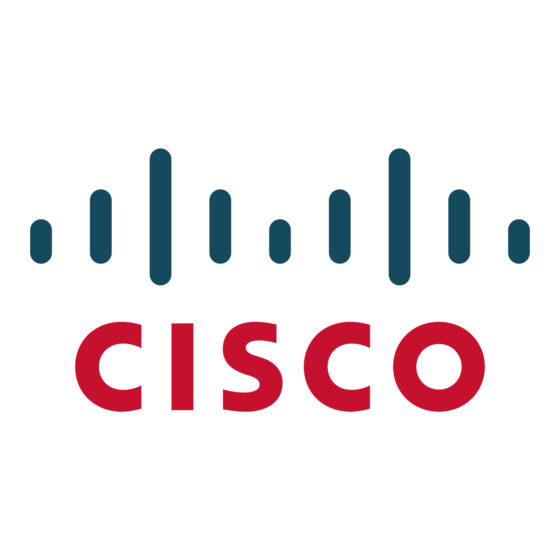SIP
MGCP
Y
N
Y
N
Y
Y
Y
Y
6
Y
Y
Y
Y
N
Y
Y
Y
Y
Y
Y
Y
Y
N
Y
Y
Y
Y
N
Y
N
Y
N
Y
6
Support is for forward, transfer, and conference; message-waiting indicator is from SIP to QSIG (not the reverse) and requires
Cisco IOS Software Release 12.4(11)T; calling and connected ID are not supported
7
Requires Cisco Unified Communications Manager 4.1(3)SR2 or later and Cisco IOS Software Release 12.4(9)T or later; no
gatekeeper support
© 2013 Cisco and/or its affiliates. All rights reserved. This document is Cisco Public Information.
H.323
Feature
Y
E1 MelCAS
Y
E1 R2 (more than 30 country variants)
Y
T1/E1 ISDN PRI Q.931 interfaces
Y
T1/E1 Q.SIG basic call (including calling number)
3
N
T1/E1 Q.SIG, including call diversion and forward,
transfer, calling and connected ID services, and
message-waiting indicator
Y
Out-of-band dual-tone multifrequency (DTMF)
N
Single point of gateway configuration for a Cisco IP
Telephony network
Y
Cisco Unified Communications Manager failover
redundancy
7
Y
Cisco Unified Communications Manager call preservation
during failover
Y
SRST and gateway fallback
7
Y
Call preservation for existing BRI and PRI calls during
gateway fallback and recovery
7
Y
Call preservation for existing T1/E1 (CAS) and analog
calls during gateway fallback and recovery
Y
Multicast music on hold (MoH) - centralized
N
Multicast MoH - distributed
Y
Tone on hold
N
Tone-on-hold timer tuning
Benefits
E1 MelCAS facilitates connection to a PBX or PSTN.
E1 R2 enables connection to a PBX or PSTN.
These interfaces are used to connect to a PBX or key
system and to provide off-premises connections to or
from the PSTN or post, telephone, and telegraph (PTT).
This feature is used to connect to a PBX.
This feature is used to connect to a PBX.
This feature carries DTMF tones and information out of
band for clearer transmission and detection.
This feature centralizes and automates the configuration
process for MGCP unified communications routers by
making them configurable on the Cisco Unified
Communications Manager. Configuration information is
automatically downloaded at startup and after any
configuration change.
When the unified communications router loses contact
with the primary Cisco Unified Communications Manager,
the gateway uses the next available Cisco Unified
Communications Manager.
Existing calls are preserved during a failover to the next
available Cisco Unified Communications Manager. Calls
are also preserved upon restoration of the primary host
Cisco Unified Communications Manager.
When contact with the Cisco Unified Communications
Manager cluster is lost, SRST provides basic call
handling for the IP phones. Gateway fallback provides
support for PSTN telephony interfaces on the branch-
office router for the duration of the loss.
Existing calls are preserved during a loss of connection to
the Cisco Unified Communications Manager cluster and
gateway fallback. Calls are also preserved upon
restoration of the Cisco Unified Communications
Manager connection.
Existing calls are preserved during a loss of connection to
the Cisco Unified Communications Manager cluster and
gateway fallback. Calls are also preserved upon
restoration of the Cisco Unified Communications
Manager connection.
This feature helps the unified communications router
deliver music streams from a MoH server to users on on-
and off-net calls.
This feature helps the unified communications router
deliver music streams to users through the router-
embedded MoH server to on- and off-net calls.
Tone indicates when a user is placed on hold.
Tone on hold is generated locally in the gateway for play
to the PSTN. Tone-on-hold timer tuning allows the use of
service parameter settings in Cisco Unified
Communications Manager for specification of the time
between beeps.
Page 6 of 20

